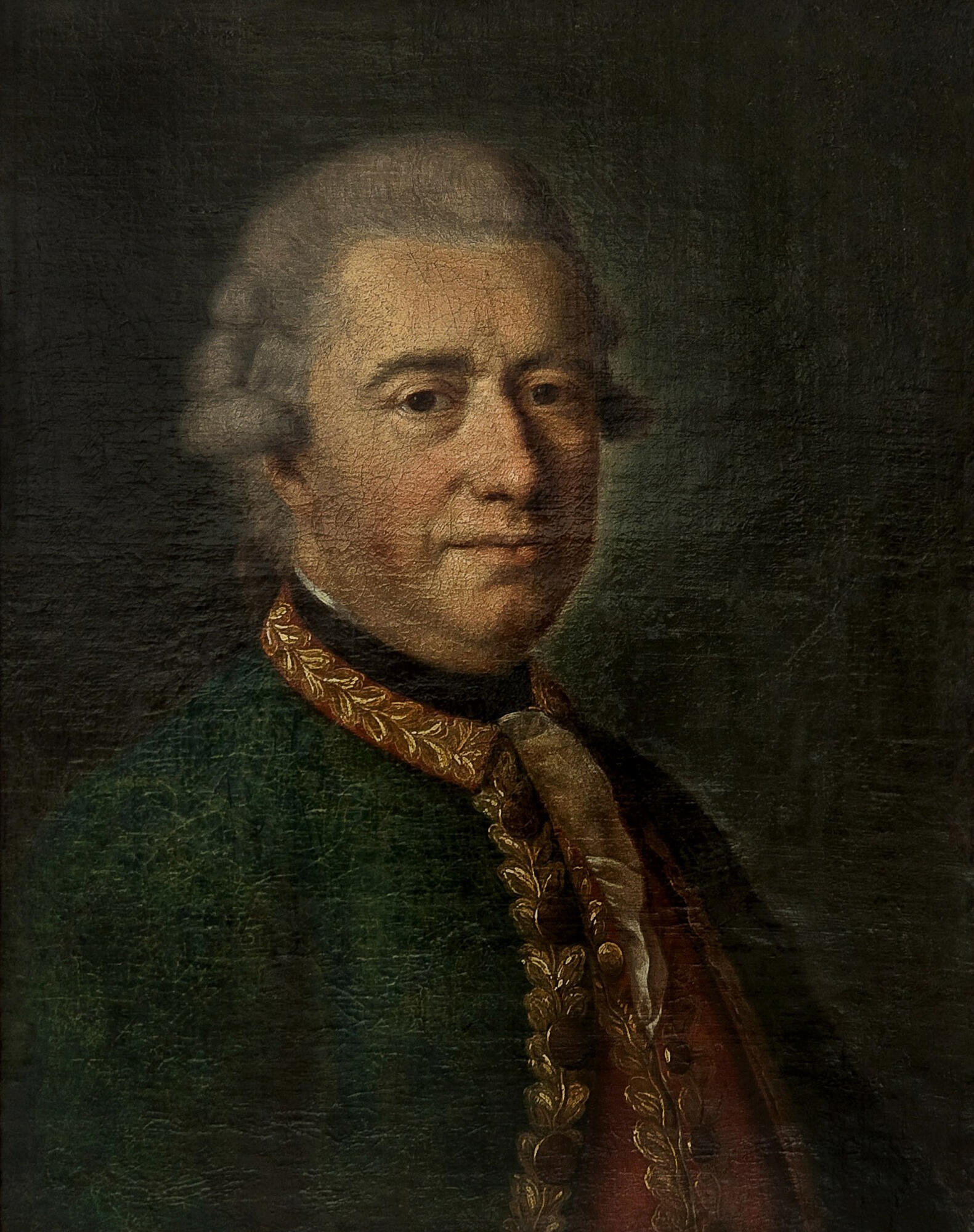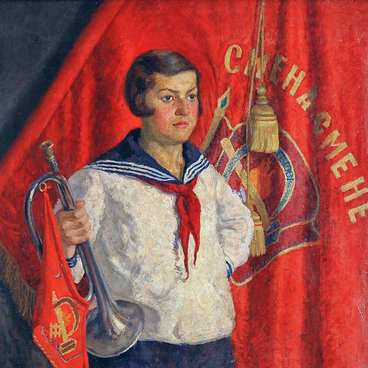The 18th century in European culture was known as the century of portraits. Artists were usually commissioned to paint in this genre.
The portrait displayed at the museum exhibition was painted by an unknown artist around the 1770s–1780s. The central figure of the painting is the Lieutenant-General Adolphe-Francois Marquis de Bandre du Plessis. In his early youth, he served in the Royal Saxon Army, fought in The Seven Years’ War from 1756 to 1763 on the territory of Pomerania, and after the end of the war, he was invited by Catherine II to join the Imperial Russian Army as Captain.
During the reign of Catherine the Great, du Plessis fought in numerous military conflicts, commanded a regiment, and led the Army Corp during the Crimean campaign. He was under the patronage of Count Nikita Panin, an influential Russian statesman and political mentor to Catherine the Great. In addition, Adolphe-Francois de Bandre du Plessis was highly respected by one of the greatest military commanders in Russian history — Alexander Suvorov — with who he engaged in correspondence.
In addition to military service, du Plessis often carried out diplomatic missions that often took place in Poland and Crimea. For example, in 1764, he was sent on a mission to the court of Stanisław II August Poniatowski (King of Poland), where “he was in special commissions on the pretext of ministerial affairs, and was assigned to witness the King being elected and approved by the Clergy, to take notice of the actions and appeals of the Radziwiłł family and the Polish-Lithuanian Commonwealth.”
Du Plessis fought in the last stage of the Russo-Turkish War of 1768–1774. From November 1, 1776, he took part in the Crimean campaign, distinguished himself in the battle against the rebellious Tatars on the Salhyr (Salgir) river on October 17, 1777. From July 3, 1783, to May 15, 1784, he was in the Reserve Corps under the command of the General in Chief, Prince Nikolai Repnin. In 1789, du Plessis was promoted to lieutenant general, and on December 30, 1789, he retired due to being ill and settled in his mansion in the Mogilyov governorate.
On the back of the painting, there is an inscription:
The portrait displayed at the museum exhibition was painted by an unknown artist around the 1770s–1780s. The central figure of the painting is the Lieutenant-General Adolphe-Francois Marquis de Bandre du Plessis. In his early youth, he served in the Royal Saxon Army, fought in The Seven Years’ War from 1756 to 1763 on the territory of Pomerania, and after the end of the war, he was invited by Catherine II to join the Imperial Russian Army as Captain.
During the reign of Catherine the Great, du Plessis fought in numerous military conflicts, commanded a regiment, and led the Army Corp during the Crimean campaign. He was under the patronage of Count Nikita Panin, an influential Russian statesman and political mentor to Catherine the Great. In addition, Adolphe-Francois de Bandre du Plessis was highly respected by one of the greatest military commanders in Russian history — Alexander Suvorov — with who he engaged in correspondence.
In addition to military service, du Plessis often carried out diplomatic missions that often took place in Poland and Crimea. For example, in 1764, he was sent on a mission to the court of Stanisław II August Poniatowski (King of Poland), where “he was in special commissions on the pretext of ministerial affairs, and was assigned to witness the King being elected and approved by the Clergy, to take notice of the actions and appeals of the Radziwiłł family and the Polish-Lithuanian Commonwealth.”
Du Plessis fought in the last stage of the Russo-Turkish War of 1768–1774. From November 1, 1776, he took part in the Crimean campaign, distinguished himself in the battle against the rebellious Tatars on the Salhyr (Salgir) river on October 17, 1777. From July 3, 1783, to May 15, 1784, he was in the Reserve Corps under the command of the General in Chief, Prince Nikolai Repnin. In 1789, du Plessis was promoted to lieutenant general, and on December 30, 1789, he retired due to being ill and settled in his mansion in the Mogilyov governorate.
On the back of the painting, there is an inscription:



